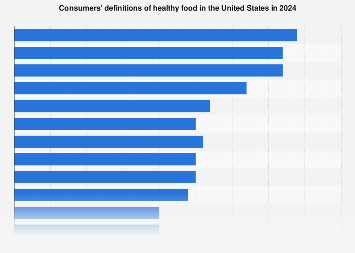In 2024, about 39 percent of respondents in the United States that the term “fresh” best defines healthy food to them. This was the most frequently chosen definition. The term “low in sugar” was the third most frequently chosen definition for healthy foods, with nearly 37 percent of respondents choosing this definition.
Healthy eating patterns in the U.S.
High-protein and mindful eating are the two most common eating patterns among U.S. consumers. These two eating patterns are followed by about 20 and 18 percent of surveyed consumers, respectively. Other popular eating patterns included intermittent fasting, calorie-counting, and clean eating. Among those consumers who follow a specific eating pattern or diet, more than 40 percent stated that their motivation is to protect their long-term health or to prevent future health conditions. Additionally, eating healthier is the most commonly made change by Americans who adjust their diet to try to manage or reduce stress, as stated by more than half of consumers who have tried to reduce their stress levels.
Sugar consumption in the U.S.
Excessive sugar consumption is one of the things that may prevent people from having a healthy diet. Over 11 million metric tons of sugar are consumed by Americans annually. The consumption of sugar in the U.S. has steadily increased during the last 14 years. The annual sugar consumption is now about a million metric tons higher than it was in 2010/11. Nonetheless, approximately two-thirds of American consumers state that they are trying to limit sugars in their diet. Moreover, about 11 percent of consumers state that they attempt to avoid sugar completely. Trying to improve the diet in general is the most common reason for limiting or avoiding sugars among U.S. consumers. Avoiding gaining weight, preventing a health condition, and losing weight are also among the top reasons.

